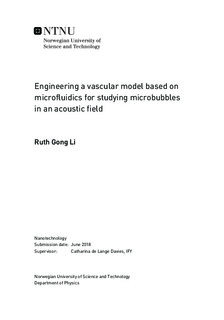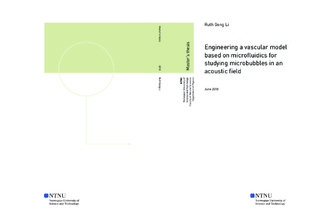| dc.description.abstract | A major challenge in cancer therapy is the poor and insufficient delivery to tumour sites which
many chemotherapeutic drugs face. Ultrasound (US) mediated delivery based on cavitating microbubbles
(MBs) has emerged as a promising approach to enhance drug delivery to tumours,
where several pathways have been proposed. One of the pathways involve the biomechanical
effects cavitating MBs exert on the endothelial barrier resulting in enhanced endothelial
permeability, with subsequent enhanced drug extravasation from the vascular compartment. In
relation to this, Acoustic Cluster Therapy (ACT) has been proposed as a novel approach to solve
the limitations of conventional MB formulations including US contrast agents. The mechanisms
involved when MBs including ACT bubbles present in the endothelial lumen are subject to US
must however be further studied and thoroughly elucidated. This was the motivation for the
work that will be presented in this thesis. The goal was to develop a protocol for producing an
in vitro system suitable for endothelial cell culture and insonation experiments, allowing interactions
between MBs and cells to be studied. Based on experiences from the pre-master
specialization project, microfluidic devices were designed and fabricated to facilitate seeding
of Human Umbilical Vein Endothelial Cells (HUVECs), with optically and acoustically
transparent materials. In addition, human prostatic adenocarcinoma (PC3) cells were seeded
in microfluidic devices used for insonation experiments to simulate biomechanical interactions
between MBs and the endothelial barrier in vivo. Sonoporation, manifested as uptake of the fluorescent
dye propidium iodide, could be observed qualitatively (and semi-quantitatively) with
both the commercially available MB SonazoidTM as well as ACT bubbles. Furthermore, the microfluidic
device enabled evaluation of MB behaviour in microscale channels during insonation,
such as the size of ACT bubbles. The goal of this master project was achieved with respect to
establishing an in vitro system that can fulfill its purposes at the proof-of-concept stage. | |

